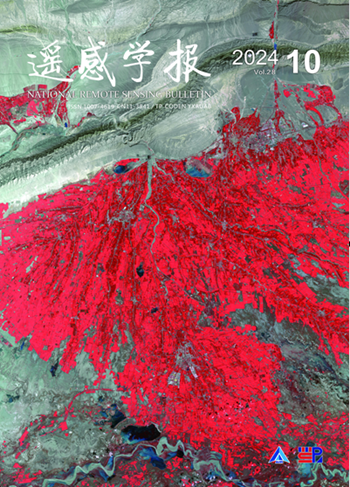Estimation of Larch Growth at the Stem, Crown and Branch Levels Using Ground-based LiDAR Point Cloud
引用次数: 2
Abstract
BackgroundTree growth is an important indicator of forest health and can reflect changes in forest structure. Traditional tree growth estimates use easy-to-measure parameters (e.g., tree height, diameter at breast height (DBH), and crown diameter) obtained via forest in situ measurements, which are labor-intensive and time-consuming to perform and cannot easily describe the changes throughout the whole growth period of a tree. The combination of Terrestrial Laser Scanning (TLS) and Quantitative Structure Modelling (QSM) can accurately estimate tree structural parameters nondestructively and has the potential to estimate tree growth. Therefore, this paper estimates tree growth according to the stem-, crown-, and branch-level attributes observed by ground-based LiDAR point clouds. Compared with conventional methods, this paper used tree height, DBH, stem volume, crown diameter, crown volume and first-order branch volume to estimate the growth of 55-year-old larch trees in Saihanba at the stem, crown and branch levels, respectively. ResultsThe experimental results showed that the absolute growth of the first-order branch volume was equivalent to that of the stems, which highlights the importance of branches in the study of tree growth. For 55-year-old larch, tree growth is mainly reflected in the growth of the crown, i.e., the growth of branches. Compared to one-dimensional parameters (tree height, DBH and crown diameter), the growth of three-dimensional parameters (crown, stem and first-order branch volumes) was more obvious. ConclusionsFor 55-year-old larch, three-dimensional tree parameters can more effectively describe tree growth, and the absolute growth of the first-order branch volume is close to the stem volume. In addition, it is necessary to estimate tree growth at different levels.基于地面的激光雷达点云估算落叶松树干、树冠和枝条的生长
背景树木生长是森林健康的重要指标,可以反映森林结构的变化。传统的树木生长估计使用通过森林原位测量获得的易于测量的参数(例如,树木高度、胸径(DBH)和树冠直径),这是劳动密集型和耗时的,并且不能容易地描述树木整个生长期的变化。地面激光扫描(TLS)和定量结构建模(QSM)相结合,可以无损地准确估计树木结构参数,并具有估计树木生长的潜力。因此,本文根据地面激光雷达点云观测到的树干、树冠和树枝级别的属性来估计树木的生长。与传统方法相比,本文采用树高、DBH、树干体积、冠径、冠体积和一级枝条体积分别从树干、树冠和枝条水平对塞罕坝55年生落叶松的生长进行了估算。结果实验结果表明,一级枝条体积的绝对生长量与树干体积的绝对增长量相当,这突出了枝条在树木生长研究中的重要性。对于55岁的落叶松来说,树木的生长主要体现在树冠的生长,即枝条的生长。与一维参数(树高、DBH和树冠直径)相比,三维参数(树冠、树干和一级枝条体积)的生长更明显。结论对于55岁落叶松,三维树木参数可以更有效地描述树木的生长,并且一级枝条体积的绝对生长量接近树干体积。此外,有必要估计不同水平的树木生长情况。
本文章由计算机程序翻译,如有差异,请以英文原文为准。
求助全文
约1分钟内获得全文
求助全文
来源期刊

遥感学报
Social Sciences-Geography, Planning and Development
CiteScore
3.60
自引率
0.00%
发文量
3200
期刊介绍:
The predecessor of Journal of Remote Sensing is Remote Sensing of Environment, which was founded in 1986. It was born in the beginning of China's remote sensing career and is the first remote sensing journal that has grown up with the development of China's remote sensing career. Since its inception, the Journal of Remote Sensing has published a large number of the latest scientific research results in China and the results of nationally-supported research projects in the light of the priorities and needs of China's remote sensing endeavours at different times, playing a great role in the development of remote sensing science and technology and the cultivation of talents in China, and becoming the most influential academic journal in the field of remote sensing and geographic information science in China.
As the only national comprehensive academic journal in the field of remote sensing in China, Journal of Remote Sensing is dedicated to reporting the research reports, stage-by-stage research briefs and high-level reviews in the field of remote sensing and its related disciplines with international and domestic advanced level. It focuses on new concepts, results and progress in this field. It covers the basic theories of remote sensing, the development of remote sensing technology and the application of remote sensing in the fields of agriculture, forestry, hydrology, geology, mining, oceanography, mapping and other resource and environmental fields as well as in disaster monitoring, research on geographic information systems (GIS), and the integration of remote sensing with GIS and the Global Navigation Satellite System (GNSS) and its applications.
 求助内容:
求助内容: 应助结果提醒方式:
应助结果提醒方式:


